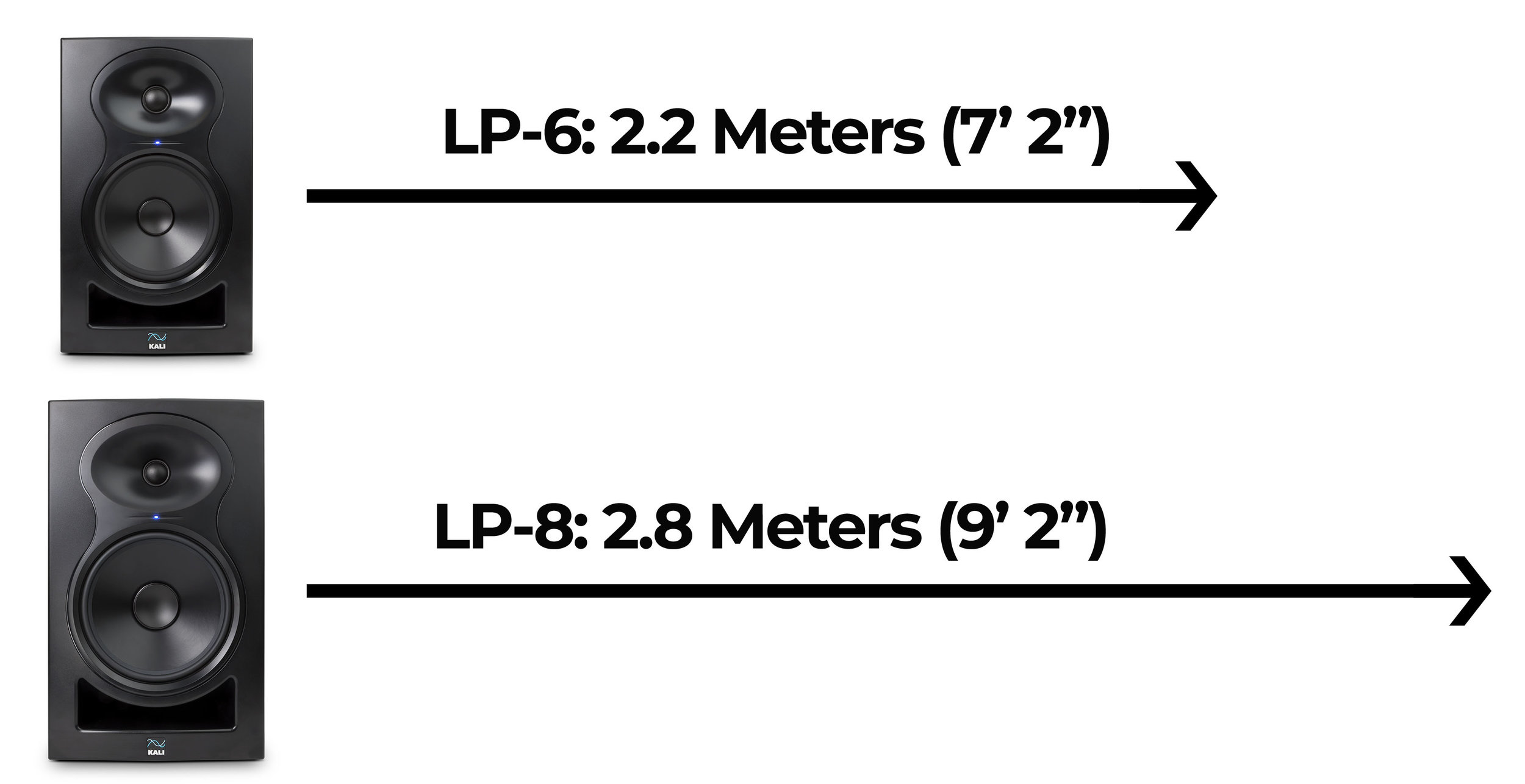What about the size of my room?
All rooms are subject to a phenomenon called room modes, where bass builds up in certain parts of the room, and cancels in other parts of the room. Room modes can make it hard to make critical decisions about the bass in your mix. This phenomenon can be particularly bad in small rooms, and many people choose to use smaller speakers in these rooms. The thought is that, because the smaller speaker doesn’t play as low, it will be less likely to excite room modes and overwhelm the room with bass.
Because the LP-6 and LP-8 are so close in frequency response, there is little cause for concern here. Further, room modes can be mitigated with clever placement of the loudspeakers, or acoustic treatments that target problematic frequencies.
The LP-Series loudspeakers’ waveguides actually make them a particularly good choice for smaller rooms! Lateral reflections from nearby walls will help to enhance the stereo image, giving you a much more precise “view” of the mix you’re working on.







